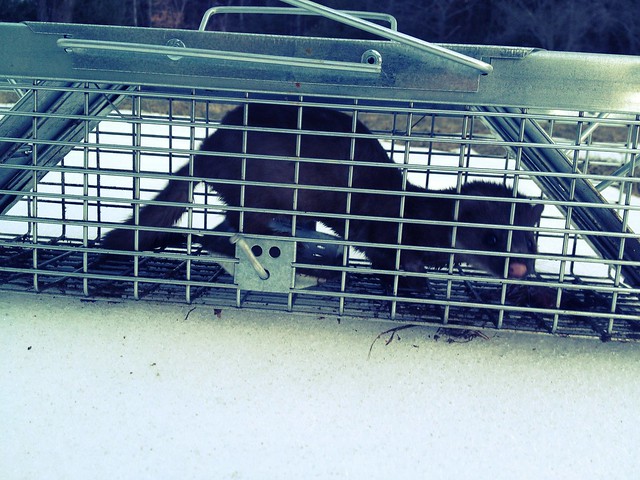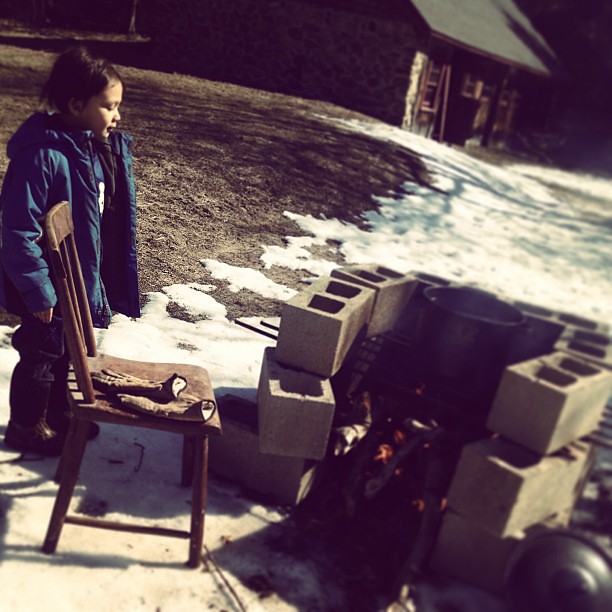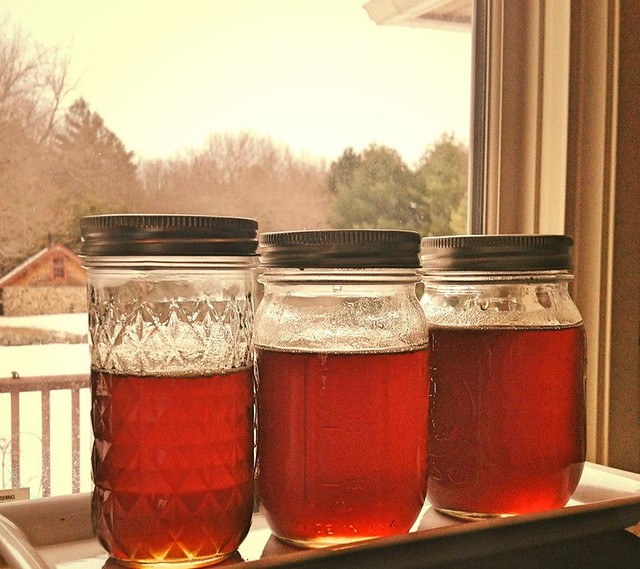Farmer: 0 - Weasel: 1
/- Weasels smell.
- Really bad.
- Weasels are seriously cunning. Capable of sneaking off with the bait without springing the trap.
- When a weasel shrieks at me unexpectedly, I jump like a little girl.
I was filled with satisfactory glee this morning when I found I had finally caught the little murderer who's killed more than a dozen of my hens in the last weeks. I triumphantly carried him up to the porch and showed him off to my Bride with the righteous satisfaction of Lady Justice. Through the window. It is still cold out, and she was still in her pajamas. (My Bride, that is. I have no idea if Lady Justice wears pajamas).
I had spoken quietly to the animal control officer at the police station and a few farmers I know about what to do with the vermin after you catch them. I'm not going to just go release them happily into the woods, to see them come back to their old stomping grounds, or find some other person to bother. Most farmers find a way to quickly kill off the vermin - raccoons, weasels, etc. - that are a constant plague to their livelihood. The most recommended course? A quick shot with a .22 (which I don't own), or drop them into a water-filled garbage can to drown them.
Because winter hasn't quite breathed it's last frigid gasp up here in the great white land of Yankees, we haven't turned on the outside water yet. So I filled an empty 6 gallon bucket with water, and went out to help the weasel shuffle off his coil.
I gave the weasel a knowing look, and he showed me his teeth. (That's when I learned #4 above). I decided I'd reveled enough, and hurried on to the final bit. I was a little bit uncomfortable with this part, but not terribly so. Dealing with life & death of predators and the animals I've taken on to care for is part of the deal.
I tipped the trap up vertical and dropped it into the bucket.
Unfortunately for me, I hadn't noticed that the trap doors are held down by gravity. As soon as I tipped it up vertical, the weasel was able to push his way out and jump from the bucket. He left nothing but a blur and a cloud of mocking musk behind him as he dashed across my lawn and disappeared back into the woods.
This is not over, Mr. Weasel











